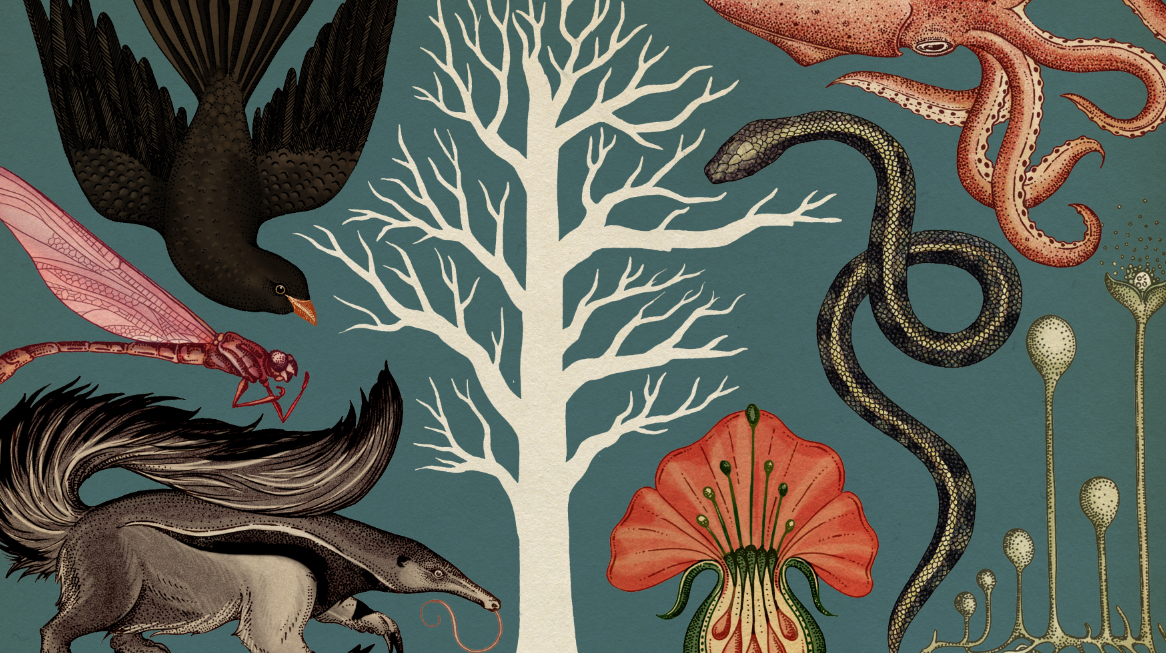It appears Yeats was right, things fall apart, the centre cannot hold.
From Quanta Magazine, May 5, 2015:
A Surprise for Evolution in Giant Tree of Life

Honeycreepers, small birds inhabiting the Hawaiian Islands, have a rich assortment of beak shapes. Some species have long, thin beaks suited to plucking insects from leaves. Others possess thick beaks good for cracking open tough seeds. According to the classic view of evolution, natural selection drove the development of these different species. Each variant adapted to suit a different ecological niche. But Blair Hedges, a biologist at Temple University in Philadelphia, has proposed a provocative alternative: Adaptation had little to do with it. It was simply a matter of chance and time.
This controversial proposal stems from efforts by Hedges and collaborators to build the world’s most comprehensive tree of life — a chart plotting the connections among 50,000 species of Earth’s vast menagerie. Their analysis suggests that speciation is essentially random. No matter what the life form — plant or animal, insect or mammal — it takes about 2 million years for a new species to form. Random genetic events, not natural selection, play the main role in speciation.
Evolutionary biologists find the research effort intriguing, particularly in its size and scope, but they are also somewhat skeptical of the provocative ideas that have emerged. “It’s a huge tour de force,” said Arne Mooers, a biologist at Simon Fraser University in British Columbia. “There are lots of interesting claims — the devil will be in the details.”
To build the tree, Hedges, his Temple colleague Sudhir Kumar, and their collaborators compiled data from nearly 2,300 published studies, gleaning from each the time when two species diverged from a common ancestor. They used those data to construct a map of relationships among different species, known as a “timetree.” To form a branch, the researchers started with the two species within a closely related taxonomic group that have the most recent common ancestor. Then they added the next closest species, and so on. (In a family tree, that’s akin to starting with siblings, then adding in first cousins and second cousins.) Bringing all those branches together results in a comprehensive timetree of life.
“It’s an astonishingly large exercise they’ve done,” said Michael Benton, a paleontologist at the University of Bristol in England. “Many people in the field would be unable to do that.”
It will take some time for scientists to sort through the technical details of the paper, which was published in April in the journal Molecular Biology and Evolution. And while some scientists have been complimentary, others immediately challenged the results, questioning both the accuracy of the tree and the conclusions that Hedges has drawn. “I am very skeptical about inferring patterns of speciation from such a broad overview of the tree of life,” said Chris Jiggins, a biologist at the University of Cambridge in England.
Species Enigma
One reason scientists are skeptical is that Hedges’ clocklike pattern conflicts with the traditional picture of how evolution unfolds. “The classic view of evolution is that it happens in fits and starts,” Benton said. A change in the environment, such as a rise in temperatures after an ice age, might spark a burst of speciation as organisms adapt to their new surroundings. Alternatively, a single remarkable adaptation such as flight in the ancestors of birds or hair in mammals might trigger a massive expansion of animals with those characteristics....MORE